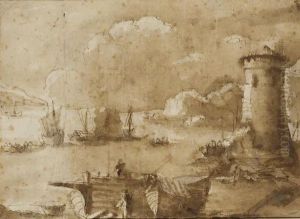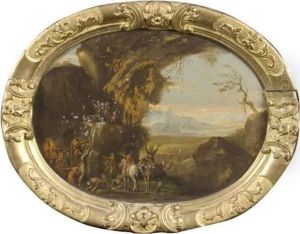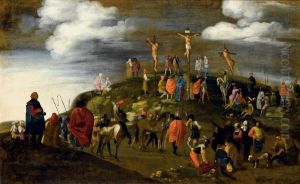Filippo Angeli Paintings
Filippo Angeli, born in 1607 in Rome, was an Italian Baroque painter whose artistic endeavors contributed to the rich tapestry of 17th-century Italian art. Although not as widely recognized as some of his contemporaries, Angeli's work provides a fascinating glimpse into the Baroque era's stylistic evolution and thematic diversity. His life, framed by the Counter-Reformation's cultural and religious dynamism, unfolded during a period that sought to communicate religious narratives and human emotions with renewed intensity and directness.
Angeli's artistic journey was deeply rooted in the bustling artistic environment of Rome, where he was exposed to the works of the Baroque masters. This exposure helped shape his stylistic development, aligning him with the movement's characteristic embrace of dramatic effects, rich color palettes, and dynamic compositions. Despite the scarcity of detailed records about his personal life and training, it is believed that he was influenced by the works of his contemporaries, such as Caravaggio, whose use of chiaroscuro and realistic representation of human figures marked a significant departure from the idealized portrayals common in earlier Renaissance art.
Throughout his career, Angeli focused on religious and mythological themes, which were prevalent among artists of his time. His paintings are noted for their emotional depth and ability to convey complex spiritual and moral messages through the interplay of light, shadow, and expression. Angeli's work was appreciated for its devotion to naturalism and its capacity to evoke empathy and reflection in the viewer.
Despite his contributions to the Italian Baroque movement, Filippo Angeli's name remains relatively obscure, overshadowed by the era's more famous figures. His death in 1654 in Rome marked the end of a career that, while not documented as extensively as those of his peers, significantly enriched the artistic landscape of his time. Today, Angeli's surviving works offer valuable insights into the diversity of artistic expression during the Baroque period and stand as a testament to the enduring power of visual art to communicate across centuries.


